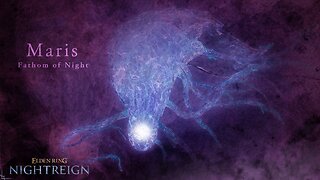Premium Only Content

An Origin Story 🤯 Easter Holiday Facts #shorts #shortsvideo #viral
The use of the Easter bunny as a symbol of Easter can be traced back to 16th-century Germany. The Easter bunny, also known as the Easter hare or Easter rabbit, was first mentioned in German writings in the 1500s, and by the 18th century, the tradition had spread throughout Europe.
In the United States, the tradition of the Easter bunny became popular in the 19th century, brought over by German immigrants. It was further popularized through Easter-themed books, cards, and advertisements in the 20th century, and today the Easter bunny is a widely recognized symbol of the holiday in many parts of the world.
Germany has several traditional Easter foods that are enjoyed during the holiday season. Some popular examples include:
Easter Lamb: Roast lamb is a traditional Easter food in Germany, especially in the southern regions. It is often served with potatoes and vegetables.
Easter Bread: Easter bread, or Osterbrot, is a sweet bread made with raisins, almonds, and spices like cinnamon and cardamom. It is often shaped like a braid or wreath and decorated with dyed eggs.
Easter Ham: Another popular Easter dish is ham, which is often glazed with honey or mustard and served with sauerkraut or potatoes.
Easter Soup: In some regions of Germany, it is customary to eat a soup made with green herbs, eggs, and cream on Easter Sunday.
Hot Cross Buns: Although originally a British tradition, hot cross buns are also popular in Germany during Easter. These sweet, spiced buns are made with raisins or currants and marked with a cross on the top.
Easter Eggs: While not a food in themselves, Easter eggs play a big role in German Easter traditions. They are often decorated and exchanged as gifts or hidden for children to find during Easter egg hunts.
#shortsvideo #easter #germany #shortvideo #trending #youtubeshorts #viral #tutorial
-
 2:29:36
2:29:36
Laura Loomer
7 hours agoEP136: YOU'RE FIRED! White House Vetting Crisis Continues
52.4K29 -
 8:07
8:07
MattMorseTV
7 hours ago $5.51 earnedTrump just LOWERED PRICES by 75 PERCENT.
31.4K32 -
 LIVE
LIVE
Misfit Electronic Gaming
10 hours ago $3.68 earned"LIVE" "Blind Descent' +"Dollhouse of Dead" Playtest 10 Followers till we hit 1000! We CAN do this!
513 watching -
 21:53
21:53
Glenn Greenwald
9 hours agoMichael Tracey on the Street: What Do People Think of the Epstein Case?
124K57 -
 2:26:28
2:26:28
megimu32
6 hours agoOTS: Board Games Gone Wild! The Loud, Weird & Chaotic Games That Raised Us
33.7K9 -
 4:25:16
4:25:16
DamnDanieI
7 hours agoKill First, Loot Later – OTG Live
51.9K1 -
 56:41
56:41
Donald Trump Jr.
11 hours agoLies, Leaks, and Lawfare: Censorship Corruption Exposed | TRIGGERED Ep.263
174K159 -
 1:19:46
1:19:46
Precision Rifle Network
8 hours agoS4E25 Guns & Grub - Rex Is Back, I shot the 6.5PRC finally...
30.4K1 -
 5:42:52
5:42:52
rhywyn
6 hours agoうつ
18.5K4 -
 LIVE
LIVE
RyuMuramasa✧
7 hours agoNEW Everdark Sovereign | Elden Ring Nightreign | LIVE Playthrough
24 watching